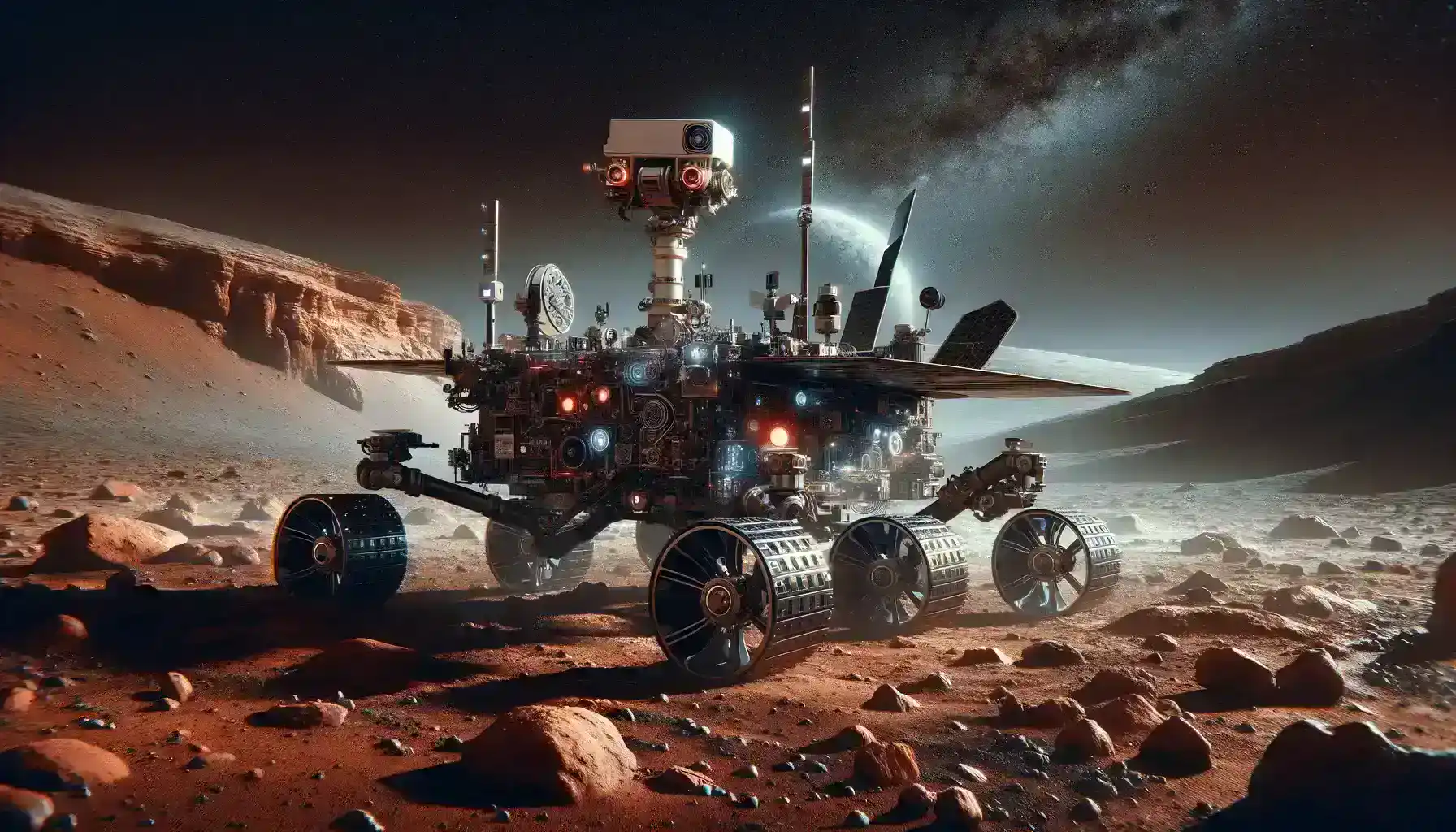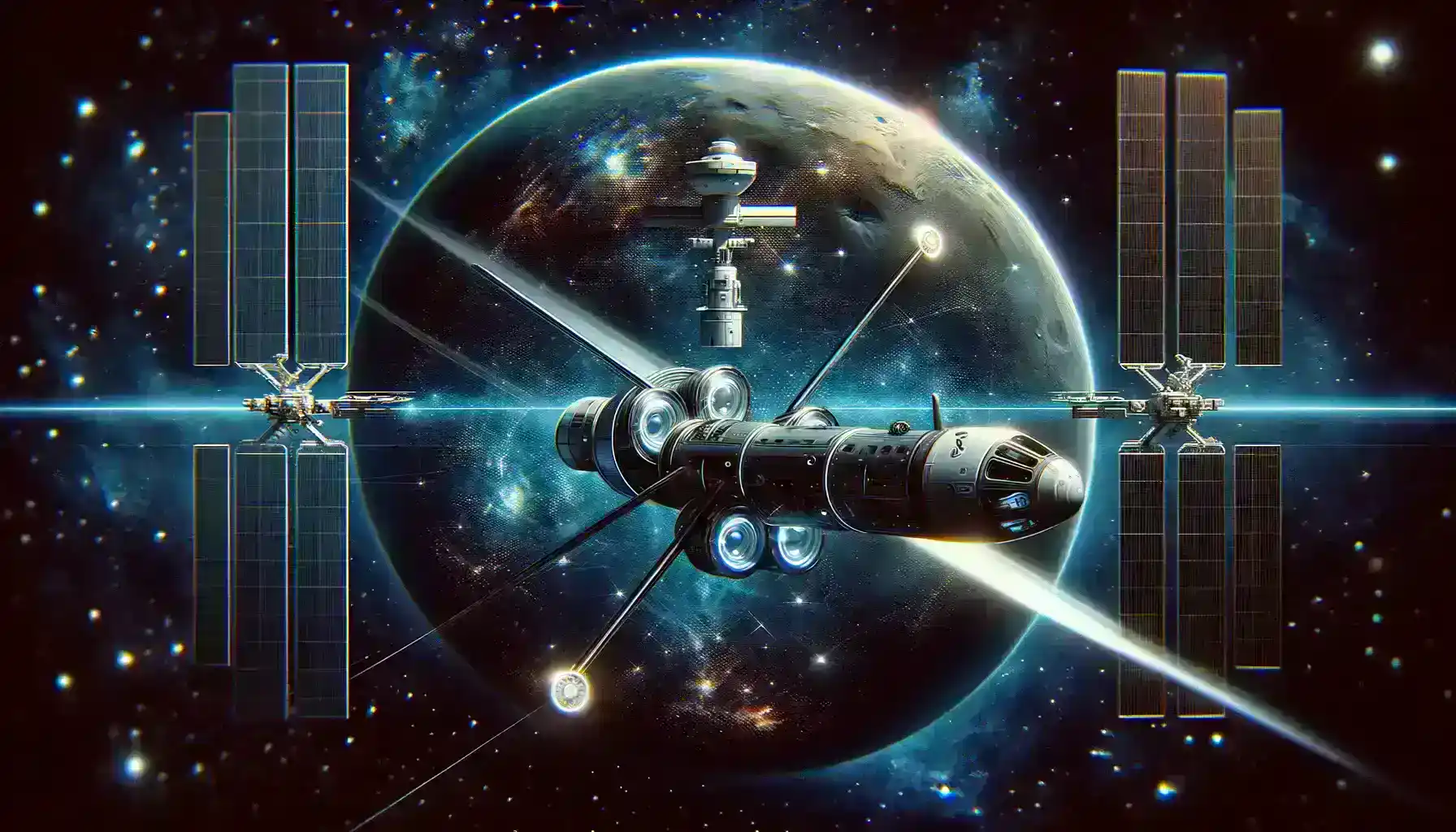Table of Contents
The vast expanse of space has always intrigued humanity. Exploring the cosmos, uncovering its mysteries, and venturing into the unknown have been among our greatest ambitions. In recent years, a transformative force has joined us on this journey: Artificial Intelligence (AI) in space. This article delves into the captivating realm of AI in space exploration. It unveils five powerful ways in which AI, in its synergy with space technology, propels us into the next frontier of cosmic discovery.
AI’s integration into space exploration has ushered in an era of unparalleled innovation, allowing us to reach farther, delve deeper, and perceive the cosmos in ways hitherto unimaginable. From autonomous rovers navigating distant planets to AI-driven telescopes unveiling distant galaxies, the impact of AI is profound. These real-world examples demonstrate that AI isn’t just a tool; it’s the engine behind our cosmic aspirations.
As we embark on this cosmic odyssey, we’ll unveil the symbiotic relationship between AI and space exploration, where each discovery, mission, and journey illuminate the uncharted territories of the universe, heralding a new era of exploration and understanding. Welcome to the next frontier, where AI illuminates the cosmic pathways to discovery.
Autonomous Rovers Revolutionize Planetary Exploration

AI-driven autonomous rovers have ushered in a revolutionary era. These remarkable machines are equipped with cutting-edge AI systems that endow them with a level of autonomy and decision-making capability that was once the stuff of science fiction. Here’s how autonomous rovers are transforming our exploration of distant planets:
These rovers are engineered to navigate the most treacherous terrains with finesse. The incorporation of AI technology equips them with the ability to process complex environmental data, identify obstacles, and plan alternative routes in real-time. This means they can traverse rugged landscapes, rocky surfaces, and even steep inclines, all while ensuring their safety.
NASA’s Perseverance Rover
One standout example of the transformative power of AI in space exploration is NASA’s Perseverance rover. As part of the Mars 2020 mission, Perseverance boasts an array of AI algorithms that endow it with a high degree of autonomy. It can make decisions independently, allowing it to choose its path across the Martian surface.
Furthermore, Perseverance’s AI capabilities enable it to detect and navigate around obstacles, ensuring that it avoids potential hazards along its route. This level of autonomy significantly reduces the need for constant human intervention, allowing scientists and engineers on Earth to focus on higher-level mission planning and analysis.
Space Telescopes Enhanced by AI Revolutionize Astronomy
The marriage of space telescopes and artificial intelligence (AI) has ushered in a profound transformation. AI has breathed new life into these celestial observers, endowing them with unprecedented capabilities that have revolutionized our understanding of the cosmos. One of the most significant ways AI has transformed space telescopes is through its ability to process and analyze colossal volumes of astronomical data in real time, surpassing the limits of human capacity.
AI’s Role in Space Telescopes
AI-powered space telescopes possess the ability to process data at lightning speed. They tirelessly scan the skies, capturing vast datasets of celestial observations. These observations range from distant galaxies and nebulae to the faintest glimmers of light, all collected in real-time. It’s here that AI takes center stage, performing intricate data analysis that would be unmanageable for human astronomers alone.
The Transiting Exoplanet Survey Satellite (TESS)
A stellar illustration of AI’s transformative influence in this field is NASA’s Transiting Exoplanet Survey Satellite (TESS). TESS is a cutting-edge space mission with a primary objective: to discover exoplanets, and planets orbiting stars beyond our solar system. The sheer volume of data TESS collects is staggering, as it monitors the brightness of hundreds of thousands of stars simultaneously.
AI comes to the rescue by efficiently sifting through this deluge of data, identifying subtle variations in starlight that may indicate the presence of exoplanets. TESS’s AI-driven approach has yielded groundbreaking results, leading to the discovery of thousands of exoplanets, some of which are situated within the habitable zones of their stars—conditions that could potentially support life.
Advanced Spacecraft Navigation and Maneuvering: AI in Space Exploration

AI plays a pivotal role in spacecraft navigation and maneuvering, where precision and safety are paramount, Artificial Intelligence (AI in Space Exploration has emerged as a linchpin in spacecraft navigation and maneuvering. This transformative technology enables spacecraft to execute intricate maneuvers, make split-second decisions, and reach their destinations with unparalleled accuracy.
AI-driven navigation and maneuvering systems operate on a foundation of algorithms that process vast streams of data and respond to changing conditions in real-time AI in space exploration. Their ability to adapt to unexpected situations and make autonomous course adjustments is a hallmark of their significance.
SpaceX’s Autonomous Docking with the International Space Station (ISS)
AI’s prowess in this domain is exemplified by SpaceX’s Crew Dragon spacecraft. The Crew Dragon, as part of NASA’s Commercial Crew Program, relies heavily on AI algorithms to autonomously approach and dock with the International Space Station (ISS). This remarkable feat of autonomous docking showcases the precision and reliability that AI brings to space missions.
The Crew Dragon’s AI-driven approach ensures a seamless and secure connection with the ISS. It effectively calculates the optimal trajectory, adjusts for any deviations, and executes the docking procedure with minimal human intervention. This level of autonomy not only enhances safety but also increases mission efficiency by reducing the workload on astronauts.
Predictive Maintenance for Space Stations
In the vast and unforgiving expanse of AI in Space Exploration, where the nearest repair shop is millions of miles away, the maintenance of space stations is paramount. To ensure their smooth operation and the safety of astronauts aboard, space stations like the International Space Station (ISS) have turned to the power of Artificial Intelligence (AI) for predictive maintenance.
AI’s Role in Predictive Maintenance
Predictive maintenance is a proactive approach that relies on AI algorithms to continuously monitor the equipment and systems on a space station. These algorithms analyze vast amounts of data, including telemetry, sensor readings, and equipment performance metrics, to detect anomalies and deviations from expected behavior.
The International Space Station (ISS)
The ISS, a marvel of human engineering and international cooperation, orbits the Earth, providing a unique environment for scientific research and international collaboration. To keep the ISS running smoothly, NASA, in partnership with other space agencies, has implemented AI-based predictive maintenance.
On the ISS, AI algorithms monitor everything from life support systems to critical components of the station’s structure. When AI detects a potential issue, it alerts the crew, allowing astronauts to plan and execute maintenance activities before the problem escalates. This proactive approach not only ensures the safety of the astronauts but also extends the lifespan of the station itself.
By reducing the need for emergency repairs, predictive maintenance helps save time and valuable resources. It ensures that the ISS can continue its mission of scientific research, international cooperation, and AI in space exploration without interruptions caused by unexpected equipment failures.
AI Powers Data Analysis in the Search for Extraterrestrial Life

In the relentless quest to uncover the existence of extraterrestrial life, Artificial Intelligence (AI) has emerged as a powerful ally, revolutionizing the way we analyze data from various sources within the cosmos and AI in space exploration. This fifth dimension of AI in space exploration is pivotal, as it harnesses the computational prowess of AI to scrutinize immense datasets for subtle signals that could hint at the presence of alien civilizations.
The Search for Extraterrestrial Intelligence (SETI)
The Search for Extraterrestrial Intelligence, famously known as SETI, stands at the forefront of this cosmic endeavor. SETI deploys cutting-edge AI algorithms to meticulously dissect radio signals emanating from the far reaches of space. The AI’s role is twofold: to sift through an astronomical volume of data and to recognize patterns or anomalies that transcend the realm of natural phenomena.
SETI’s use of AI-driven data analysis is akin to searching for a needle in a cosmic haystack. These algorithms excel at discerning signals that deviate from known natural sources, such as pulsars or quasars. In the past, this might have been an insurmountable task for human analysts, given the sheer magnitude of data collected. However, AI’s computational prowess enables it to detect subtle irregularities that could signify an intentional transmission—a potential message from extraterrestrial intelligence.
As AI in space exploration continues to evolve, so too does its role in the search for extraterrestrial life. The synergy between AI and the cosmos holds the promise of one of humanity’s most profound discoveries: confirmation of life beyond Earth.
Conclusion: Unleashing the Cosmic Frontier
The integration of AI in space exploration marks a transformative milestone in our cosmic endeavors, reshaping the very essence of our journey into the unknown. It signifies a paradigm shift in our capacity to unravel the enigmas that shroud the universe in mystery.
From autonomous rovers traversing the rugged landscapes of distant planets to the AI-powered telescopes that unveil the secrets of galaxies far beyond our reach, AI has etched itself as an indispensable companion to space scientists and researchers. These real-world instances underscore the fact that AI is not merely a technological addendum; it stands as the linchpin that unshackles the cosmic frontiers of the discovery of AI in space exploration.
As we relentlessly advance AI technology and extend our grasp into the cosmos, we stand on the precipice of unveiling the universe’s secrets in unprecedented ways. The cosmos beckons and AI is our unwavering guide on this remarkable odyssey. The next cosmic frontier awaits, its mysteries ready to unfurl as never before, and AI illuminates the path, ensuring that our journey into the cosmos knows no bounds.